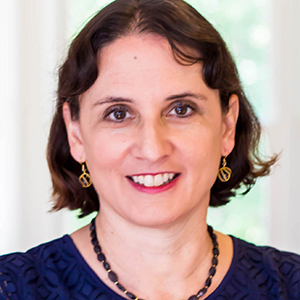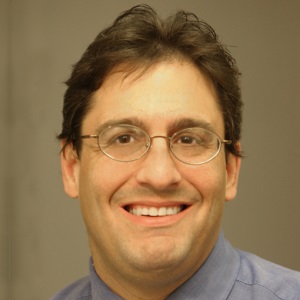Surviving and (sometimes) thriving as a department chair
About five years ago, we started what we call a “chair chat” network as an informal support group for chairs of biochemistry and chemistry departments at primarily undergraduate institutions. As faculty at public and private institutions of varied sizes, members of the group bring diverse perspectives to conversations about leadership. We have brainstormed solutions to address challenges in our departments and supported each other in the transition from faculty member to department chair.

Here we share some experiences and advice, which may help those who are already department chairs and those who may become chairs in the future.
1. How did you become chair?
Pam Mertz: The position is a three-year term at my college, rotating through tenured faculty members. We are a relatively small department with eight tenure-track or tenured faculty, so it was inevitable my turn would come. I put myself forward at a time when I thought I could do a lot to move some important department initiatives forward such as revising the curriculum and creating clear guidelines for faculty for promotion.
Joe Provost: I was reluctant to become a chair but felt I should. I have had a few leadership positions; in the Army, I was a chemical warfare officer and ended as a commander of a National Guard infantry headquarters company, and I was the CEO and COO of two small biotech companies. Thus, the call to service in academic leadership positions, including positions in the American Society for Biochemistry and Molecular Biology, the Council on Undergraduate Research, the American Chemical Society and Project Kaleidoscope, naturally fell into place. At both my last and current universities, my department needed a chair, and I felt a duty to fulfill that mission. I thought I could and should help the institution, even though the position took an incredible amount of time and competed with research, and personal goals often are pushed down the priority list.
Teaster Baird: For me, it was a combination of opportunity and a desire to try something new. I just had been promoted to full professor the semester before I became chair, and I was looking for new challenges, specifically ways I could have an impact on the greater university community. Being a chair wasn’t on my planned career trajectory, but our chair was leaving in the middle of her term to take advantage of a new opportunity within the university. She encouraged me to consider taking over as interim chair for the remainder of her term. I saw the “interim” tag as a way out in case I didn’t like being chair.
2. What personal traits did you need to work on to succeed as chair?
PM: I had to learn how to communicate effectively with the provost and the president of my college. Specifically, I needed to be more aggressive in ways I might not have been as a faculty member. I needed this skill when negotiating for as much startup funding as possible for a new faculty member, speaking during department chair meetings on important issues for the faculty in my department, and negotiating with the provost on issues related to faculty course schedules or adjunct pay.
I also needed to think in advance about how to ask for support; I had to come up with solutions to problems and know what specific resources to ask for. I also sent routine emails, once or twice a year, to let the administration know what the faculty in my department had accomplished.
JP: Most people don’t know that my inner voice says, “Let’s get it done, let’s quit discussing an issue to death.” I like to get things done. Early in my career, I didn’t keep that inner voice inside, and I was a little too pushy, which wasn’t always helpful in an academic setting. The dominant voice has diminished some, and I have learned through experience that, especially in academia, people need a chance to share their voices. I am now happy to let a discussion get a little messy. I’ve worked on how to keep a conversation moving, to encourage other voices to be heard and to know when it is time to move to a decision.
TB: I made many adjustments, but I had to make the biggest change in two related traits. First, I had to learn to make my voice heard. I am not an outgoing and forward person by nature, so that requires effort. As chair, I represent the faculty, staff, and students in the department to the university decision-makers who control the flow of resources. I have to make sure they know and consider our department’s needs and desires for resources and our positions on issues.
Second, I had to learn to navigate various professional circles in the university. As a faculty member, I spent most of my time with other faculty within my department, so I knew that world pretty well. As chair, I communicate and interact with the greater university community, which doesn’t always operate the way my department, or even my college, does. I find myself doing what I call “professional behavior translation” quite often.
3. How did your relationships with colleagues change when you became chair?
PM: I strove to be a fair chair and not play favorites with any faculty members in my department. I needed to handle a variety of conflicts and consider a number of different perspectives — students, faculty and administrators, depending on the issue or conflict. This sometimes shifted my relationship with my department’s faculty from friendly colleague to more of a manager role. Some relationships were definitely strained, but I believe that was temporary while challenging issues were being resolved.
JP: Sometimes I joke that the scariest thing a chair can hear is a knock on the door followed by “Do you have a minute?” From some of these impromptu conversations I learned many things about my department — things that are a chair’s responsibility to lead and manage. That means making decisions that aren’t going to make people your friends. Our chair chat group discovered that we learn many things about our colleagues. I try hard not to take comments from staff or faculty members personally, but it isn’t easy. Having this group outside the department and the university that I can talk things out with and being able to vent helps me keep good relationships with colleagues.
TB: Getting to know my colleagues more fully has been the biggest change in my relationships. As a faculty member, I could easily excuse myself from difficult or uncomfortable situations. As chair, that’s not an option. In fact, those situations seem to seek me out. I have learned what people are passionate about, what they enjoy and do not enjoy doing, and how they respond to certain situations and ideas. I try to be fair and impartial and transparent. I don’t think I’ve made any enemies, but I’ve been in a couple of tense situations.
4. What opportunities came your way outside of your department as a result of serving as chair?
PM: I became co-leader of a National Science Foundation–funded Council on Undergraduate Research Transformations project to scaffold research experiences into our curriculum. My department has been working on it for the past four years, and my role as chair was instrumental in helping to make this project a department priority so that we could make significant progress. For example, I set up meetings dedicated to project work and aimed to keep other department business out of these conversations, despite the presence of ongoing issues. I am also leading my department in the design of a new teaching lab space for biochemistry. I was department chair when planning for renovations started, and I have continued to lead the project.
JP: As Pam describes, a number of internal opportunities opened up after I became a department chair. Also, I had never thought before about if or when I might consider another level of academic leadership. Prior to my latest chair position, I would get an occasional letter or email from a search firm, but now the queries are constant. I also get more networking requests from other universities asking for information and potential networking. I’ll now often get a request to be an external reviewer or just to share information about departmental policies and practices. These are all great opportunities to expand my network of peers.
TB: Internal opportunities have also come my way because of my position as chair. I have served on several university-level committees that specifically asked for the involvement of department chairs. I have had the opportunity to meet and interact with influential people outside of my college, such as individuals in upper administration, and learn how the university operates and what it takes to make real and lasting change at the university level. For example, I had the opportunity to serve on a committee to advance diversity, equity and inclusion in faculty hiring because I was a department chair.
5. How do you attempt to maintain work-life balance?
PM: This is an ongoing endeavor. I am working to set better boundaries with regard to my work and personal life, making sure I spend quality time with my husband and son. I like to hike and garden, and I am an amateur potter. Working with clay and being creative allows me to set aside work issues and other concerns.
JP: I have always liked to do a lot of things. However, I am horrible at the whole work-life- balance thing. Sometimes I am not even sure that to be successful, the balance is balanced. Over a larger time scale there has to be some sort of balance but rarely on a day-to-day or even week-to-week scale. However, helping is my very supportive wife and that my three children are grown up. This is good, as I spend way too much time on chair duties. When I started my current position, I kept track of and graphed the amount of time I spent on chairing, teaching, research and miscellaneous professional duties over a semester. That graph was depressing, but it helped me realize that a 70-hour week was unsustainable. My summers focus on chair work, and research drops to about 45 to 50 hours a week. It’s still not where I want it to be and a work in progress. I now try to play hockey and spend more time on my stained glass and playing drums and guitar. Those activities come in bursts, often not frequent enough.
TB: Learning to set boundaries is absolutely essential. I find it helpful to recognize —and remind myself — that not every situation is an emergency that demands 100% of my attention at that very moment. Some things can actually wait. I also try to make sure my time with my family is committed time and not an afterthought. I limit my screen time, and I won’t answer calls or check emails on my phone if I’m spending time with them. I also play the piano and dabble in photography for my own personal escapes.
6. What advice would you give to a new department chair?
PM: Expect the unexpected and learn to go with the flow. The pandemic illustrated the many ways department chairs have to be prepared to respond to crises and adapt. Don’t assume you can schedule out your week in advance; you never know what concerns or requests will show up at your department chair door. These requests can come from students, faculty, or your dean or provost.
Have a vision for ways you can work with your faculty to improve the department. During my time as chair, we scaffolded research experiences throughout our curriculum to provide support for all our students, and we developed detailed guidelines for faculty scholarship, teaching and service expectations.
JP: I’ve tried hard to keep my research group of eight to 12 undergraduates going, write grants and publish. It hasn’t been easy and has been much slower than I had hoped. But it’s important to keep going. Find a way to not give up on research; find a way to focus on the most important aspects of research and keep swinging at the low-hanging fruit. It is entirely too easy to put going into the lab off until later. I’ve done that too many times.
Know the difference between leadership and management. A good chair needs to be both a leader and a manager. Making decisions and setting a path with the department is leadership; managing resources and setting schedules are management. Finding a way to involve faculty in achieving a goal but keep things focused is leadership (something I still need help with).
TB: A new chair needs to understand and accept that most people will not fully understand what you do. I didn’t fully appreciate the job(s) of the chair until I became one, and that’s one reason I was so happy to be invited to join the chair chats. Not only were Pam and Joe trusted friends, they were also chairs and could relate to my experiences and give specific and relevant advice. Sometimes, we’d just have venting sessions.
That leads to my second piece of advice: Get a support group. Talking with Pam and Joe has helped me successfully navigate some sticky situations and know that many of my experiences were not unique.
Enjoy reading ASBMB Today?
Become a member to receive the print edition four times a year and the digital edition monthly.
Learn moreFeatured jobs
from the ASBMB career center
Get the latest from ASBMB Today
Enter your email address, and we’ll send you a weekly email with recent articles, interviews and more.
Latest in Careers
Careers highlights or most popular articles

Upcoming opportunities
Calling all biochemistry and molecular biology educators! Share your teaching experiences and insights in ASBMB Today’s essay series. Submit your essay or pitch by Jan. 15, 2026.

Mapping proteins, one side chain at a time
Roland Dunbrack Jr. will receive the ASBMB DeLano Award for Computational Biosciences at the ASBMB Annual Meeting, March 7–10, just outside of Washington, D.C.

Exploring the link between lipids and longevity
Meng Wang will present her work on metabolism and aging at the ASBMB Annual Meeting, March 7-10, just outside of Washington, D.C.

Upcoming opportunities
Calling all biochemistry and molecular biology educators! Share your teaching experiences and insights in ASBMB Today’s essay series. Submit your essay or pitch by Jan. 15, 2026.

Defining a ‘crucial gatekeeper’ of lipid metabolism
George Carman receives the Herbert Tabor Research Award at the ASBMB Annual Meeting, March 7–10, just outside of Washington, D.C.

Building the blueprint to block HIV
Wesley Sundquist will present his work on the HIV capsid and revolutionary drug, Lenacapavir, at the ASBMB Annual Meeting, March 7–10, in Maryland.



